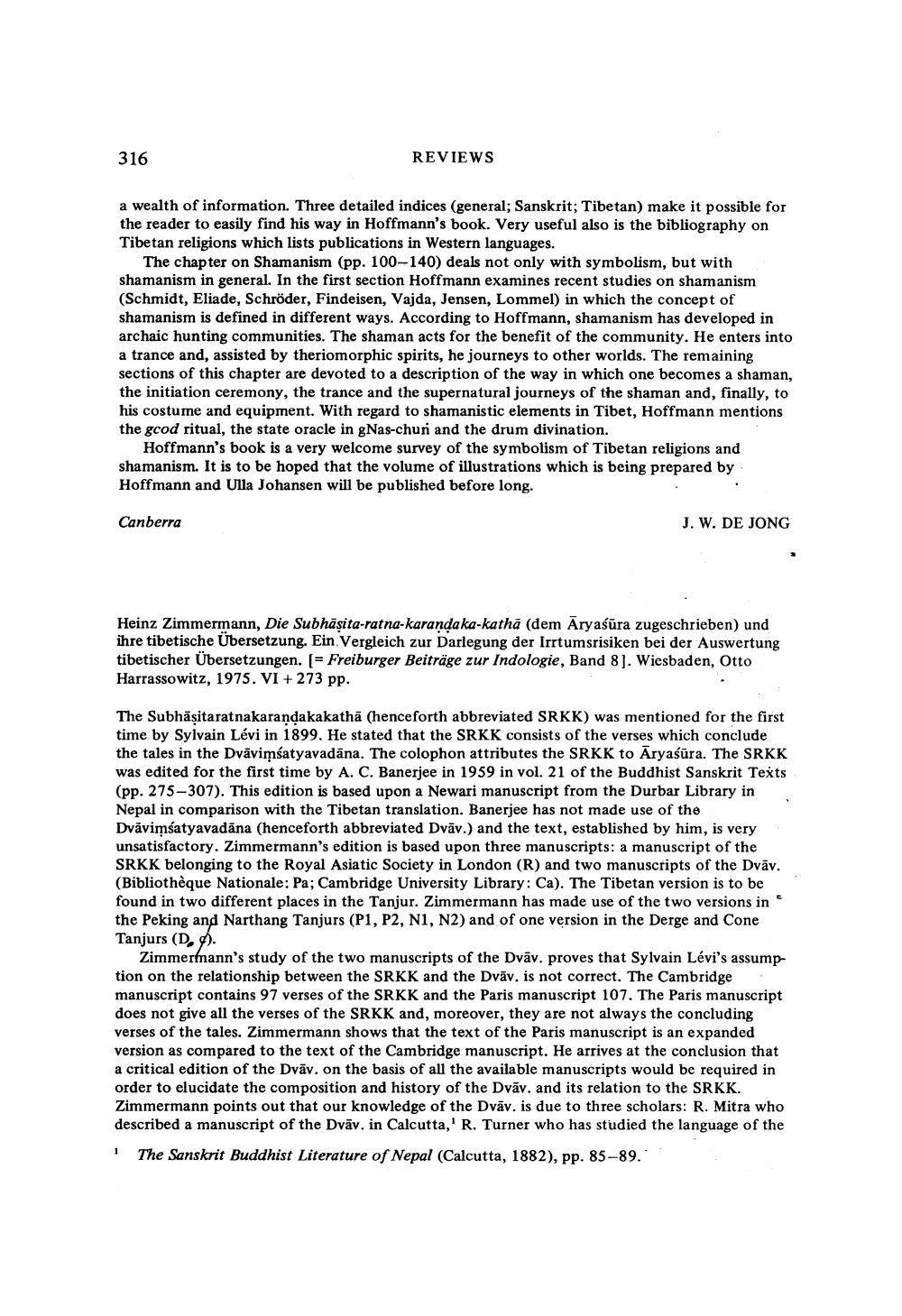________________
316
REVIEWS
a wealth of information. Three detailed indices (general; Sanskrit; Tibetan) make it possible for the reader to easily find his way in Hoffmann's book. Very useful also is the bibliography on Tibetan religions which lists publications in Western languages.
The chapter on Shamanism (pp. 100-140) deals not only with symbolism, but with shamanism in general. In the first section Hoffmann examines recent studies on shamanism (Schmidt, Eliade, Schröder, Findeisen, Vajda, Jensen, Lommel) in which the concept of shamanism is defined in different ways. According to Hoffmann, shamanism has developed in archaic hunting communities. The shaman acts for the benefit of the community. He enters into a trance and, assisted by theriomorphic spirits, he journeys to other worlds. The remaining sections of this chapter are devoted to a description of the way in which one becomes a shaman, the initiation ceremony, the trance and the supernatural journeys of the shaman and, finally, to his costume and equipment. With regard to shamanistic elements in Tibet, Hoffmann mentions the good ritual, the state oracle in gNas-chur and the drum divination.
Hoffmann's book is a very welcome survey of the symbolism of Tibetan religions and shamanism. It is to be hoped that the volume of illustrations which is being prepared by Hoffmann and Ulla Johansen will be published before long.
Canberra
J. W. DE JONG
Heinz Zimmermann, Die Subhasita-ratna-karanda ka-kathā (dem Aryaśüra zugeschrieben) und ihre tibetische Übersetzung. Ein Vergleich zur Darlegung der Irrtumsrisiken bei der Auswertung tibetischer Übersetzungen. (= Freiburger Beiträge zur Indologie, Band 8). Wiesbaden, Otto Harrassowitz, 1975. VI + 273 pp.
The Subhasitaratnakarandakakathā (henceforth abbreviated SRKK) was mentioned for the first time by Sylvain Lévi in 1899. He stated that the SRKK consists of the verses which conclude the tales in the Dvāvimšatyavadana. The colophon attributes the SRKK to Aryaśūra. The SRKK was edited for the first time by A. C. Banerjee in 1959 in vol. 21 of the Buddhist Sanskrit Texts (pp. 275-307). This edition is based upon a Newari manuscript from the Durbar Library in Nepal in comparison with the Tibetan translation. Banerjee has not made use of the Dvāvimšatyavadāna (henceforth abbreviated Dvāv.) and the text, established by him, is very unsatisfactory. Zimmermann's edition is based upon three manuscripts: a manuscript of the SRKK belonging to the Royal Asiatic Society in London (R) and two manuscripts of the Dvāv. (Bibliothèque Nationale: Pa; Cambridge University Library: Ca). The Tibetan version is to be found in two different places in the Tanjur. Zimmermann has made use of the two versions in the Peking and Narthang Tanjurs (P1, P2, N1, N2) and of one version in the Derge and Cone Tanjurs (D ).
Zimmermann's study of the two manuscripts of the Dvāv. proves that Sylvain Lévi's assumption on the relationship between the SRKK and the Dvāv. is not correct. The Cambridge manuscript contains 97 verses of the SRKK and the Paris manuscript 107. The Paris manuscript does not give all the verses of the SRKK and, moreover, they are not always the concluding verses of the tales. Zimmermann shows that the text of the Paris manuscript is an expanded version as compared to the text of the Cambridge manuscript. He arrives at the conclusion that a critical edition of the Dvāv. on the basis of all the available manuscripts would be required in order to elucidate the composition and history of the Dvāv. and its relation to the SRKK. Zimmermann points out that our knowledge of the Dvāv. is due to three scholars: R. Mitra who described a manuscript of the Dvāv. in Calcutta,' R. Turner who has studied the language of the
1
The Sanskrit Buddhist Literature of Nepal (Calcutta, 1882), pp. 85-89.




